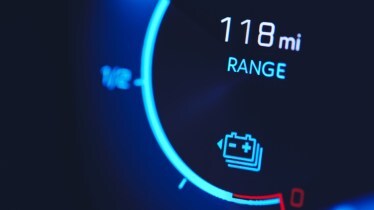By Dr Yashodhan P. Gokhale
Today, sodium-ion batteries are getting noticed as a possible alternative to lithium-ion batteries. With substantial investments in the technology by such global leaders as Contemporary Amperex Technology Co., Limited (CATL) and BYD heralding production on a large scale, sodium-ion batteries have sparked the interest of the automotive and energy storage industry.
Benefits and technology readiness
Sodium-ion batteries have many advantages over lithium-ion ones, such as better performance at lower temperatures and reduced dependence on the supply chain. These batteries offer a major advantage in cold temperature storage, since they perform really well even at such low temperatures as -10°C or -20°C. They also have high-power capabilities, using them to advantage in both energy and power applications, with the capacity of operating at 3C or 4C high-power rates. Besides, sodium-ion batteries can withstand extreme temperatures and humidity levels—which further enhances their appeal.
There are many players in the industry that are making tall claims about the long life of these batteries and are boasting about reaching over 4,000-5,000 cycles. Moreover, achieving the desired performance and life cycle compared to lithium-ion batteries remains a focal point for further development. Companies, such as CATL, BYD, HINA (China), Faradion (UK), Tiamat, North Volt (Europe),KPIT, NCL, CECRI and IIT-Roorkee (India), are actively involved in the research and development of sodium-ion.
A few companies have announced advancements in their sodium-ion products, but most are still between 5 and 6 of technology readiness levels (TRLs). However, they are yet to reach the required level of commercial production (TRLs 7-9). The choice of cathode and anode materials—which varies from company to company and can impact the general commercial readiness of the technology—is critical. CATL, HiNA and BYD, the key players, have already presented their progress with sodium-ion battery technology. For instance, the JAC Group, in collaboration with HiNa batteries, announced a vehicle launch only a couple of months ago.
Cost and energy density challenges
Cost is another significant factor hampering the commercial adoption of sodium-ion batteries. Although the industry aims to match sodium-ion battery price with lead-acid battery prices by 2025 or 2026, the cost at present is quite high, compared to Nickel-Manganese-Cobalt (NMC) batteries, or even higher. The cost of sodium-ion batteries depends upon the raw materials used. But the ongoing R&D efforts in anode and electrolyte technologies are likely to bring down the cost over time.
In the cell manufacturing supply chain context, Indian companies are learning from global platforms and realising the importance of controlling the supply chain to reduce costs and, at the same time, ensuring good quality.
Despite a lot of excitement in the media about sodium-ion batteries as a game-changer, there are certain vital drawbacks that should be considered. In sodium-ion batteries, the energy densities are in the range of 100 wh/kg to 160 wh/kg and match the Lithium Iron Phosphate (LFP) performance at present. But to be able to reproduce and grow to meet large-scale demand, including producing one million sodium-ion cells for such a massive market as India, is still challenging.
Conclusion
Sodium-ion batteries promise to be a viable alternative to lithium-ion batteries in a big way. Despite having made significant progress, sodium-ion batteries are yet to be easily available commercially. Its cost-competitiveness is another critical milestone that is far from reach of all battery stakeholders. With industry collaborations and ongoing research, the sodium-ion technology is expected to mature to finally establish itself as a reliable and sustainable energy storage solution for the future.
The author is Chief Technology Officer at Battrixx.
Disclaimer: Views expressed are personal and do not reflect the official position or policy of Financial Express Online. Reproducing this content without permission is prohibited.
